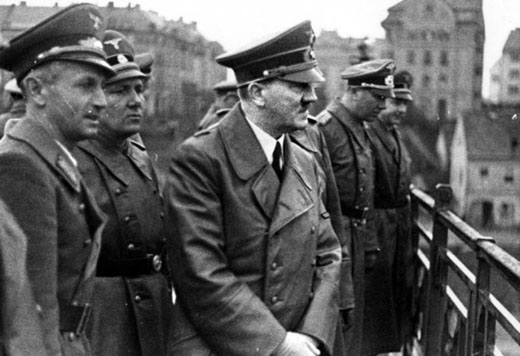Hitler Dealing with Yugoslavia

The Tripartite Pact had several predecessors, such as the Anti-Comintern Pact (signed by Germany and Japan in 1936) and the Pact of Steel (between Germany and Italy in 1939). The Tripartite Pact was joined by Hungary, Romania, and Slovakia later in the year, and Bulgaria, Yugoslavia, and Croatia in the first half of 1941.
In Yugoslavia's case, Hitler used a carrot and stick strategy: he promised to attach the Greek city of Salonika to the country should they cooperate, but also threatened to invade should they refuse. Yugoslavian leadership was dithering for a good reason: they anticipated significant domestic protest. In fact, when they finally signed the Pact, a group of military officers enacted a coup with British support, installing a new government which refused to ratify the already signed Pact.
The Nazi response was swift and devastating: an intensive bombing of Belgrade followed by a multi-pronged land invasion. The country was rapidly brought under control and surrendered unconditionally on April 17, but not before delaying the start of Operation BARBAROSSA.